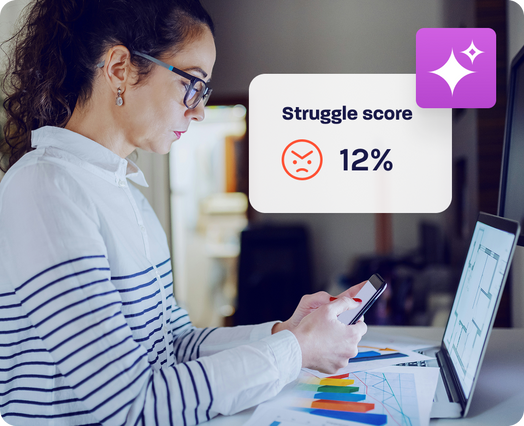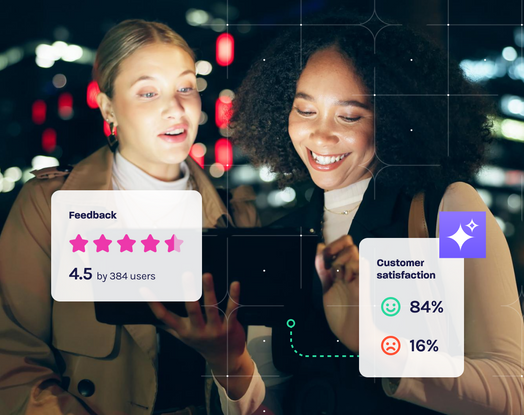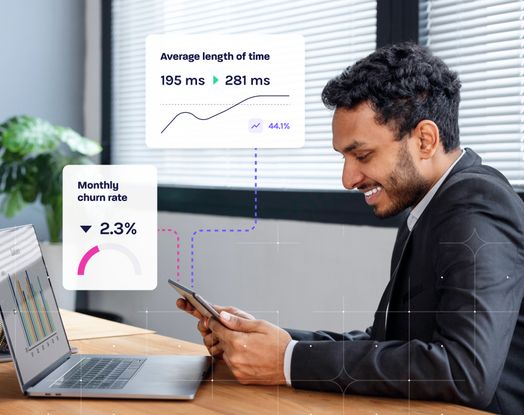
Unprecedented: Digital customer experience during Covid-19
“Unprecedented” was the word of the year in 2019, and it now sounds like a premonition for all we have witnessed in the first three months of 2020. We won’t attempt to quantify how many times this adjective has been used during the month of March alone. Instead we wish to give you an overview of the impact that Covid-19 has had on some key industries and their digital customer experience based on insights we have gathered from billions of web and mobile sessions we have analyzed.
For the purpose of this article, we have narrowed down the scope of our research to two of our core markets, US and UK, and focused on financial services, travel and retail.
We looked at the month of January, when the situation appeared to be completely under control in both the US and UK, with no emergency in sight. And we compared it to March, when it was clear to both nations the pandemic was starting to hit.
The first month of the year is typically a slow one across most industries, as all quiets down after the end-of-the-year craze. Fewer trips, fewer loans, less shopping—and January 2020 was no different.
In February, the number of online and mobile sessions started increasing, albeit not significantly in most industries.
For the sake of reminding ourselves the sequence of events, up until February 21, the Covid-19 crisis was very much confined within the borders of China. Other cases, mostly within the Asia-Pacific region, were present but appeared under control. Then the world witnessed an initial spike in cases in Italy and Iran. Despite it being only a minor number of infections to begin with, the reality and the gravity of the circumstances started sinking in. The virus has reached the heart of Europe, the Middle East and soon every other continent.
And then came March.
Here’s a summary of our research and analysis of digital customer experience trends:
Digital traffic is up overall
As you can see, both web and mobile traffic saw a huge uptick in March as more of us were confined to our homes and filling our days with time spent online—with mobile seeing the biggest increase.
Financial services digital traffic has grown
Financial services is among the industries that saw the biggest uptick as many people reached out to their banks in the wake of being furloughed or laid off. Digital traffic growth was much bigger in the US with mobile on top at 71% growth and web traffic at 52%.
Travel industry digital traffic takes a big hit
It comes as no surprise to see that web and mobile traffic has gone down in the travel industry since the onset of Covid-19, but the numbers really are staggering. Not only are conversions rates down (33% in the US and 38% in the UK), but so is overall traffic. It will be interesting to see how these numbers change as borders open and flights come back onto the schedule.
Retail seeing uptick in digital traffic — for grocery
With social distancing orders in place, it’s clear consumers have embraced grocery delivery and click and collect, with an increase in digital traffic of over 100% for supermarkets and pharmacies.
However, the big surprise for us was to see the nose dive in digital traffic for other (non-grocery) retail. Whether consumers are observing the “essentials only” instructions or holding off from shopping due to being furloughed, online and mobile conversions are both down, with a 34% drop in the US and nearly 50% in the UK.
Recommendations for optimizing the digital customer experience during Covid-19
For financial services, calls into the contact center are likely up as well as web and mobile session as customers try to sort out their finances in this uncertain time. No matter how much extra time we might have right now, no one likes waiting on hold. Banks should analyze their digital customer journey and see if there are opportunities to streamline and make it easier for customers to self-serve. When done right, digital self-service channels reduce the number of calls into the call center, reducing customer service costs and improving the overall customer experience. Also, banks should pay special attention to the mobile app experience as our data shows that consumers have clearly embraced mobile banking.
Even though traffic has dropped, retailers should capitalize on the digital traffic they do have by investigating ways to optimize the digital customer journey to increase conversion rates. With a customer journey map solution, you can discover which steps in the journey are converting and where consumers are abandoning their purchase. You might find technical glitches that are making it difficult for customers to complete their transaction. Fixing these types of issues can have a big impact on revenue potential.







